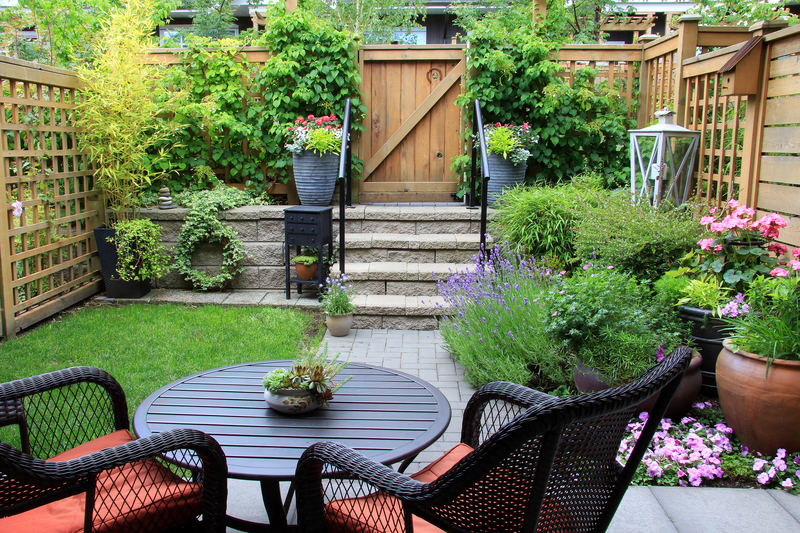Greenifying Waste: The Path to Rich Soil
Posted on 27/05/2025
Greenifying Waste: The Path to Rich Soil
The world faces a mounting waste crisis. As landfills overflow and greenhouse gas emissions rise, there is a growing need for sustainable solutions. Greenifying waste--the practice of transforming organic materials into nutrient-rich soil--offers an eco-friendly response. Through techniques like composting, we can convert kitchen scraps, yard waste, and other biodegradables into fertile ground that supports both our gardens and our planet. This comprehensive guide explores the path to rich soil through green waste management, providing everything you need to know to start your journey toward sustainable gardening and agriculture.
Understanding Green Waste and Its Potential
At its core, greenifying waste means recognizing the untapped value of organic refuse. Each peel, clippings, and spoiled fruit carries within it the seeds of new life--microorganisms and nutrients that, if properly managed, can transform poor or unproductive soil into a haven for plants.
What Is Green Waste?
- Organic material from kitchens: vegetable peels, fruit scraps, coffee grounds, eggshells
- Yard debris: grass clippings, branches, leaves, flowers
- Non-food biodegradable items: paper towels, unbleached napkins, and untreated wood shavings
The Environmental Benefits of Greenifying Waste
When we embrace green waste management, remarkable environmental benefits ensue:
- Reduced landfill pressure: Diverting organics slashes the volume of garbage and curbs methane emissions, a potent greenhouse gas.
- Soil enrichment: Composted waste introduces essential nutrients, enhancing fertility, water retention, and soil structure.
- Resource conservation: Nourished soils require fewer chemical fertilizers and less water, saving money and reducing pollution.
Greenifying scraps is a win-win, transforming waste into wealth for your garden and the planet.

From Waste Bin to Wonder: The Science Behind Rich Soil
The journey from organic waste to lush, productive soil unfolds in several fascinating stages. Composting--a controlled aerobic (oxygen-driven) process--guides this transformation. Key actors include bacteria, fungi, insects, and worms, each breaking down matter and unlocking its nutrients.
The Composting Process Explained
- Collection - Gather green (nitrogen-rich) and brown (carbon-rich) materials.
- Decomposition - Microorganisms consume the waste, generating heat and breaking it down.
- Curing - The compost matures, pathogens are destroyed, and nutrient levels stabilize.
- Application - Finished compost is introduced to soil, boosting fertility and life.
How to Greenify Your Waste: Step-by-Step Guide
Step 1: Choose Your Composting Method
Different composting techniques exist to suit every space and lifestyle. Some popular approaches:
- Backyard compost piles: Ideal for gardeners with outdoor space; easy to build from pallets or wire mesh.
- Tumbling bins: Enclosed containers that make turning and aerating waste a breeze.
- Vermicomposting: Uses worms (usually red wigglers) to rapidly break down kitchen scraps indoors or out.
- Bokashi: Fermentation-based system suitable for apartments; handles cooked food, dairy, and meat scraps.
Step 2: Gather and Balance Ingredients
The best compost relies on a balance of:
- Greens: Nitrogen-rich items like vegetable peels, fruit waste, coffee grounds, and fresh grass clippings.
- Browns: Carbon-rich materials including dried leaves, straw, shredded newspaper, and cardboard.
Step 3: Maintain Your Compost
To speed up the green waste to soil process:
- Keep it moist (like a wrung-out sponge).
- Turn or aerate the pile weekly to oxygenate.
- Chop or shred large items for faster breakdown.
Step 4: Harvest and Use Your Compost
After several months, your pile will be unrecognizable--kitchen scraps and leaves fully integrated into loamy, fragrant compost. This is the time to:
- Harvest by sifting out any undecomposed materials (return these to the pile).
- Apply generously to garden beds, lawns, container plants, or even as a topdressing on potted greenery.
Advanced Techniques in Greenifying Waste
For those ready to take their green waste transformation to the next level, consider these methods:
- Hot Composting: Achieve higher temperatures (130?F-160?F) by creating larger piles with the optimum carbon to nitrogen ratio, moisture, and frequent turning. Results in faster compost--just a few weeks!
- Trench Composting: Dig trenches in garden beds, fill with organic waste, and cover. Worms and microbes break down materials in place, feeding plants above.
- Biochar: Char organic matter through pyrolysis. Biochar enhances soil structure and can sequester carbon long-term.
Combining these techniques with standard composting can dramatically improve soil fertility and sustainability year after year.
Common Problems When Greenifying Waste (and How to Solve Them)
While green waste composting is straightforward, even seasoned gardeners can encounter issues. The key is identifying problems quickly and correcting them:
- Bad odors: Usually too many greens or not enough oxygen. Mix in more browns and turn the pile.
- Pile not heating up: Often too dry, too small, or too many browns. Add more wet greens and turn often.
- Pests: Keep out cooked food, dairy, and meats--or use enclosed composters and bokashi.
- Slow decomposition: Shred materials and maintain moisture and balance for faster results.
Urban and Community Solutions for Large-Scale Greenifying
Greenifying waste isn't limited to backyard enthusiasts. Municipalities and organizations worldwide are investing in:
- Curbside organics collection and composting facilities
- Community gardens that use shared compost heaps
- School and business food waste composting programs
Examples of Success
- San Francisco: Mandatory composting has diverted thousands of tons of waste from landfills, helping meet climate goals.
- Milan: City-wide kitchen waste collection reduced landfill waste and improved soil for city parks and farms.
Rich Soil: The Foundation of Sustainable Gardens and Agriculture
So, what makes rich soil so valuable? Here's why greenifying waste pays off:
- Supports plant health and resilience by providing slow-release nutrients
- Improves soil texture and drainage, enhancing root growth and water retention
- Boosts biodiversity, attracting beneficial insects and earthworms
- Reduces the need for synthetic fertilizers and pesticides
- Protects against erosion and nutrient runoff
Frequently Asked Questions: Greenifying Waste for Soil Health
Can I compost ALL my kitchen waste?
Most fruit and vegetable scraps, eggshells, coffee grounds, and plain rice or pasta are fair game. Avoid meat, bones, dairy, heavily oiled foods, and anything treated with chemicals unless you use advanced composting or bokashi.
What is the fastest way to turn waste into rich soil?
Hot composting with regular turning and the right moisture balance will deliver finished compost in as little as four weeks. Otherwise, expect 3-12 months with standard backyard piles.
Is composting smelly or messy?
Proper composting should produce an earthy aroma, not a stench. Odors mean something is out of balance--a quick fix with the right mix of greens, browns, moisture, and aeration.
Does compost attract pests?
Compost can attract rodents or insects if it contains meat, dairy, or isn't properly managed. Use enclosed bins, avoid prohibited materials, and always cover new food scraps.
Getting Started: Greenify Your Waste Today
Now is the perfect time to embrace the greenifying waste movement and begin your own path to rich, sustainable soil:
- Set up a simple pile, bin, or wormery
- Involve family, friends, or your community
- Experiment with what works for your space and plants
- Share your compost bounty and inspire others

Conclusion: Waste Less, Grow More
Greenifying waste is about more than reducing garbage--it's a way to create abundance from scarcity, healing soil and communities at the same time. By adopting composting strategies, supporting community efforts, and nurturing your own plants with homemade soil, you turn the cycle of waste into one of renewal.
Start small, stay curious, and enjoy the journey as your leftovers nourish a more resilient, green future.



